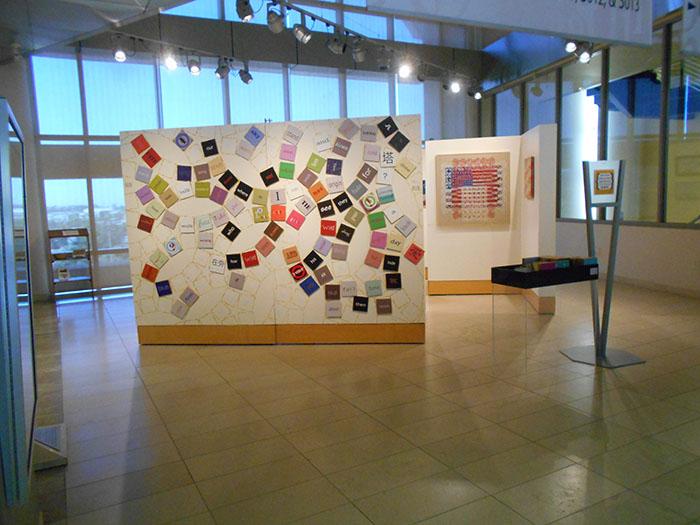Cultures unite in library exhibit
September 30, 2015
The new CSUSM library exhibit “Patterned Heritages,” featuring the exquisite artwork of well-acclaimed artist Doris Bittar, opened to the public on Sept. 17.
It features a collection of pieces aimed at giving visitors the opportunity to “uncover layers of cultural identity, history and politics.” As an art professor on campus and a multidisciplinary artist, Bittar uses her artwork to convey her own personal narratives and views on multicultural heritage.
There are four different sections in the exhibit: “Tec Sayings,” “Lebanese Linen,” “Secured States Maps” and “Stripes and Stars.” “Tec Sayings” is the central piece of the exhibit and visitors can immediately see a woven pattern that features spaces for squared tiles to be placed in. Visitors are encouraged to choose a tile featuring a word that represents their own cultural identities and stories.
Through the repetition of the word tiles and woven patterns, visitors can see how everyone shares the same cultural DNA despite the differences consistently outlined by prejudice and stereotypes.
In “Stars and Stripes,” Bittar confronts the aftermath of the 9/11 attacks. Born to Lebanese parents in Baghdad, Iraq, Bittar struggled with forming an identity that spans several civilizations. In these pieces, she features paintings of the American flag interwoven with Middle Eastern patterns. These pieces examine the idea of interlaced concepts of nationalism, power, identity and loyalty.
“Lebanese Linen” explores the French Colonial influence in Lebanon prior to the civil war. In these pieces she includes an image of her family living their normal life in their backyard as the background, covered by layers and patterns. Bittar portrays the idea of a normal family life existing despite a pending civil war.
“Secured States Maps” offers a unique approach to displaying the anxieties about security existing within Western culture. Utilizing the pattern of envelopes, Bittar creates the shapes of map outlines, each represented by the different patterns, which show their histories and connections to each other.
This exhibit not only showcases Bittar’s talents, but her determination to have her voice heard. Through her artwork, she is able to establish her perspective on what it means to have an identity and the importance of culture. It is through her artwork in which people can see the struggles of vulnerability and conflicts through understanding oneself personally and culturally.
Be sure to check out the exhibit until Dec. 14 and be a part of the cultural movement.







